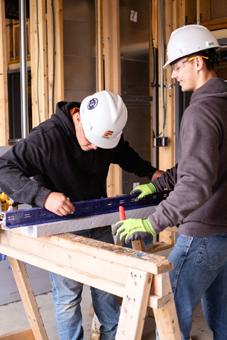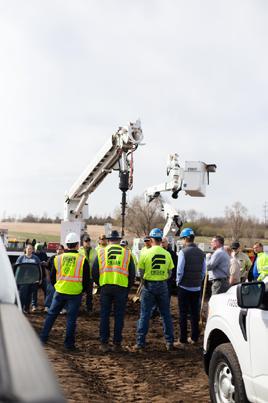SPOTLIGHT ON TEA
Construction Community Works Together
Makers Exchange a Family Spot
Airport Continues Growth
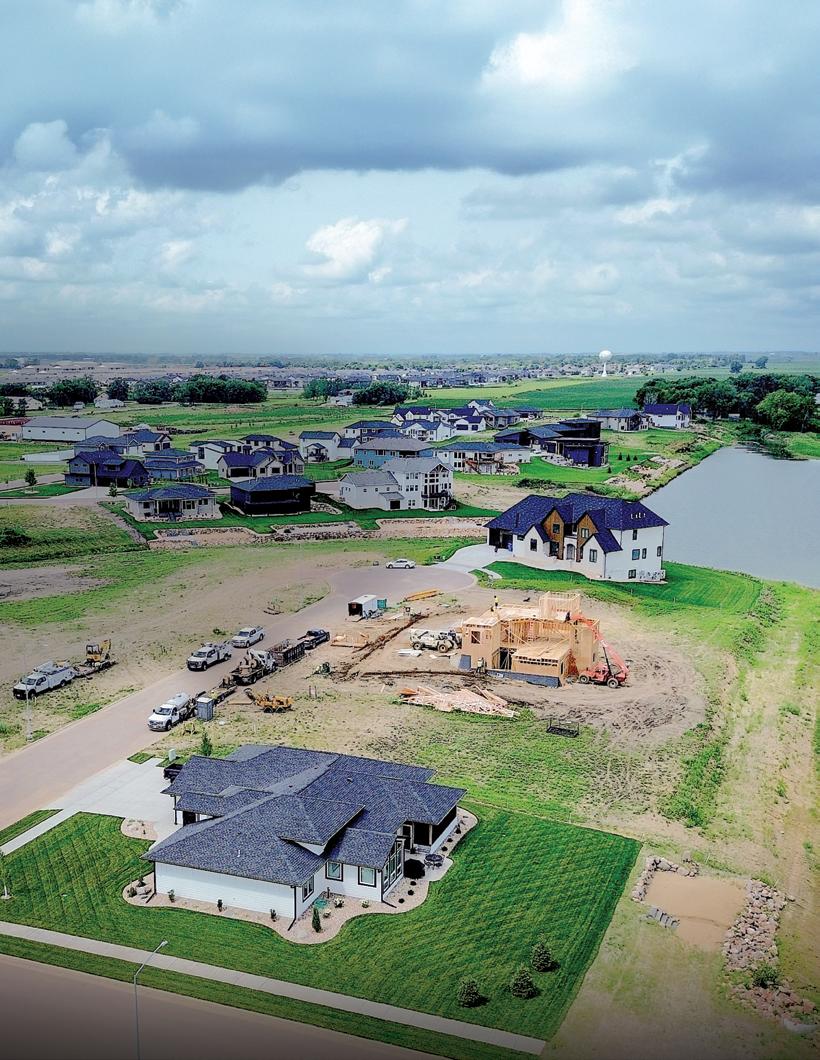


SPOTLIGHT ON TEA
Construction Community Works Together
Makers Exchange a Family Spot
Airport Continues Growth



BE savings-smart. BE grid-conscious. BE efficient. Beneficial Electrification allows you to live and BE better. Enjoy greater quality of life thanks to a grid with more renewable and affordable energy than ever before. Choose electric and plug into a cooperative equipped to power all of your needs.

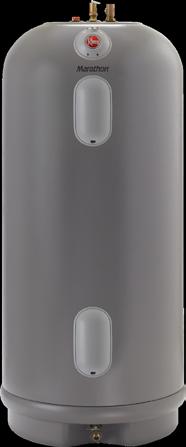

Scan here to connect with your local Touchstone Energy® Cooperative to learn about BE options, including Rheem Marathon® water heaters.







The Sioux Metro Growth Alliance (SMGA) is a nonprofit economic development organization that works to improve the economy and advocates for business development and quality of life in the communities around Sioux Falls. SMGA advocates on behalf of Alcester, Beresford, Brandon, Canistota, Canton, Centerville, Colton, Crooks, Dell Rapids, Garretson, Harrisburg, Hartford, Humboldt, Lennox, Tea, Valley Springs, and Worthing. All of these communities provide rewarding places to live and to work.
Sioux Metro Growth Alliance 196 E. 6th St., Suite 200 Sioux Falls, SD 57104
605.679.7149 info@siouxmetro.com


Board Chair Mike Jaspers, East River Electric
Vice Chair Marcus Mahlen, NAI Sioux Falls
Secretary-Treasurer Dean Karsky, Minnehaha County Commission
Past Chair, Sharese Ihnen, Lennox Area Development Corp.
Robert Baker, First National Bank
Jay Buchholz, Sioux Valley Energy
Jeff Eckhoff, City of Sioux Falls
David Kull, City of Brandon
Mike Wendland, Grant Park Capital
Tony Wiseman, Journey Construction
STAFF
Tyler Tordsen, President & CEO
Bryce Healy, Economic Development & Member Relations Specialist
Chris Fields, Economic Development & Member Relations Specialist
Joshua Chase, Economic Development & Member Relations Specialist
Karen Ruhland, Administrative Support
Nate Welch, Economic Development & External Relations Specialist
MEMBERSHIP ADVISORY BOARD
City of Alcester Dave Hodgson
City of Beresford Jerry Zeimetz
City of Brandon Patrick Andrews
City of Canistota Kaitlyn Killoran
City of Canton Jeff Tanner
City of Centerville Jared Hybertson
City of Colton Monte Koopman
City of Crooks Mike Harstad
City of Dell Rapids Chuck Jones
City of Garretson Paetyn Dreckman
City of Harrisburg Derick Wenck
City of Hartford Arden Jones
City of Humboldt Kelly O’Gorman
City of Lennox Nate Vander Plaats
City of Tea Aaron Otten
City of Valley Springs Rick Larsen
City of Worthing Scott DeWitt
Lincoln County Joel Arends
McCook County Chuck Mehlbrech
Minnehaha County Dean Karsky (Chair)
Turner County Jared Hybertson
Alliance Comm. Paul VanDeBerg
Bluepeak Lucas Peterson
East River Electric Eric Fosheim
First Interstate Bank Jay Mitchell
Golden West Travis Terkildsen
Lloyd Companies Drew O’Brien
Midco Andrew Curley
MidAmerican Energy Sam Wagner
NorthWestern Energy Paul Mantz
Sioux Valley Energy Brandon Lane
Southeastern Electric Erica Fitzhugh
South Lincoln Rural Water John Stearns
US Bank Eric Krouse
Xcel Energy Joe Anderson

Summers in the Sioux Metro are filled with movement — fresh concrete, ribbon cuttings, and big events! Some of the biggest celebrations happen in our small towns, such as the countless car shows, parades, and community gatherings. But beneath the surface, something just as important is happening: Quiet preparation.

Communities across our region are not just building — they’re planning. City councils are crafting budgets, school boards are eyeing enrollment projections, and economic development leaders are mapping out the next industrial site, housing phase or workforce strategy. It’s a reminder that growth is only half the story. Stewardship is the other half.
At SMGA, we believe responsible growth doesn’t happen by accident. It happens when cities lean into the tough conversations: What kind of community do we want to be 10 years from now? What gaps are we ready to close today so tomorrow’s residents can thrive?
We’re seeing communities like Tea, Lennox, Garretson, and Harrisburg wrestle with those questions — not from a place of panic, but from a place of progress. They’re embracing tools like our Economic Development Management Service (EDMS) not just to chase growth, but to shape it with intention. Our EDMS program is tailored to meet community needs by contracting and detailing an SMGA professional staff member directly to that community for more regular and intentional administrative support.
This summer, as the headlines celebrate the traditions and progress occurring in our communities (and there are many!), let’s also celebrate the quieter work: the council workshops, the strategic planning session, the first meeting of a new volunteer board. That’s where the next decade is being built.
The Sioux Metro isn’t growing just for the sake of it. We’re growing with purpose, and we’re building something worth sustaining. Let’s keep shaping it — together.
Tyler Tordsen President & CEO, Sioux Metro Growth Alliance tylert@siouxmetro.com

Alliance Communications
Bank Midwest
Banner Associates
Bluepeak
BNSF
Dakota Scout
DesignArc
East River Electric
EOS – Will Powell
Farmers State Bank
First Bank & Trust, Canton
First Bank & Trust, Garretson
First Interstate Bank
First National Bank in Sioux Falls
Gil Haugen
Golden West
Huff Construction
Interstate Office Products
ISG Inc.
Kelly Construction
Koch Hazard Architects
Mailbox Money
MidAmerican Energy
Midco
NAI Sioux Falls
NextEra Energy
Northwestern Energy
PASQ
Porchlight
SDN Communications
Sioux Valley Energy
Southeastern Electric
South Lincoln Rural Water
TetonRidge LLC
TSP
US Bank
VeldCo
Xcel Energy


The groundbreaking for the new Turner County Courthouse was conducted by the Sioux Metro Growth Alliance on June 11. The new courthouse will be the county’s third since its founding in 1871. Swan Lake was the original county seat. The county moved its offices to Parker in 1885. The third courthouse was built from 1902 to 1904 and served for more than 120 years until being demolished in February due to structural issues. Construction of the new courthouse is budgeted at $19 million.

Kyle Kelly, Kelly Construction, speaks at the groundbreaking ceremony for the new Allura Development located between Sioux Falls and Harrisburg. The planned neighborhood will have access to parks, trails and community spaces. Next to Bakker Crossing Golf Course, the development is served by the Harrisburg School District, Lincoln County Rural Water and City of Harrisburg sewer.
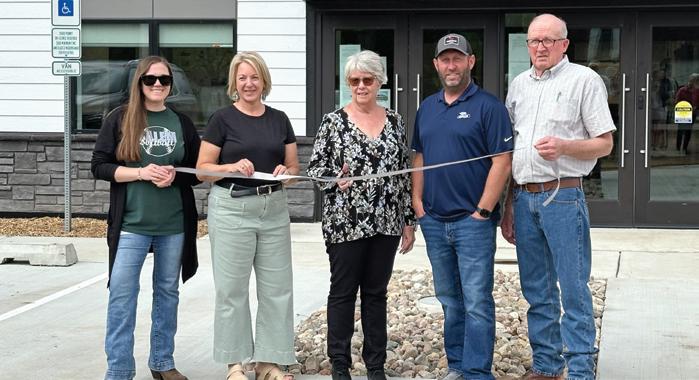
The City of Salem cut the ribbon on its new City Hall and Community Center on May 28th. Salem was devastated by two derecho storms in 2022. The opening of the facility, along with a new housing development, are the result of cooperative efforts by the City Council, Salem Development Corporation and community leaders. See related story on page 12.




This article is adapted from a recent “Growing Places” podcast when SMGA President Tyler Tordsen hosted a discussion with Crooks Mayor Butch Oseby and Hartford Mayor Arden Jones. Their discussion has been edited for length and clarity.
Strangers a decade ago, Butch and Arden have become fast friends in recent years. In addition to the pleasures of friendship, the pair work collaboratively to move their communities forward.
Butch Oseby is the mayor of Crooks and Arden Jones is the mayor of Hartford. They’ve built their personal friendship and professional collaboration through their shared connection in the Sioux Metro Growth Alliance.
During the Covid crisis, the mayors of Sioux Falls and Sioux Metro communities regularly met via online meetings. Once the Covid crisis passed, Oseby encouraged SMGA to carry that ball forward and hold Mayor’s Roundtable meetings in person. “I just felt so good about hearing from other mayors and what they were doing and how they were handling the good and the bad. It’s like having a once-a-month education class on being a mayor. We’re able to trade notes and learn from each other.”
Jones concurred. “It’s nice to get all of us in a room where there’s basically no judgment. When things have happened in Hartford and I wonder how to handle it, I’ll bring it up at the meeting, and two or three of the mayors say, ‘Oh, yeah, this is what we did.’ Man, it’s so nice to have that almost-instant feedback.”
When Hartford was trying to pull together the resources for new wastewater treatment facilities, a discussion begun on an SMGA bus tour ultimately delivered a solution. The Sioux Metro Growth Alliance helped facilitate discussions and introductions which led to the Northern Minnehaha County Wastewater Regionalization plan, which received $23.6 million from
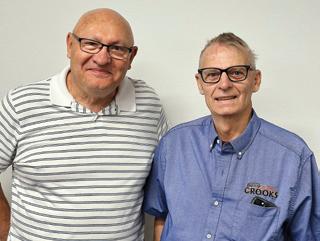
the EPA State and Tribal Response Grant Program thanks to South Dakota’s U.S. Senators. The vision of the total $47.6 million project is to construct a wastewater conveyance system from the communities of Crooks, Colton, and Lyons to a new mechanical treatment facility in Hartford, allowing for further residential, commercial, and industrial development in the rural area while mitigating negative environmental impacts associated with growth.
The plan also has the potential for the Tri-Valley School District and other rural Minnehaha County developments to connect to the state-of-the-art facility at Hartford in the future. It will have the capacity to handle the discharge from all of these communities, better positioning the region to handle growth in housing and businesses of all types. “A lot of our small towns have operated on lagoon systems forever,” said Tyler Tordsen, president and CEO of Sioux Metro Growth Alliance. “As environmental standards increase, this kind of critical infrastructure for a community is expensive. Hartford and Crooks are making an investment that’s going to provide growth opportunities for 50 plus years ahead.” A ribbon-cutting ceremony on the Hartford facility is expected to occur this fall.
Tordsen continued, “There’s tremendous value in the connectivity piece of SMGA. If a town is out there on an island by themselves, you won’t have the opportunity to build the kind of relationship and friendship that Arden and Butch have built with their fellow mayors.”
Jones is a native of Lake Preston and a graduate of Dakota State University. He and his wife, Deb, have lived in Hartford for close to 25 years. He’s retired from a lifelong career in sales. He was named to the Hartford City Council in 2016, at a time when there was upheaval and a push-and-pull about what direction the city should head. “When several council members resigned, the new mayor, Jeremy Manning, asked me to fill the year left on his term on the council.” The new mayor and council members brought a different mindset. “Most of us were small businessmen and we said we’ve got to start running the city like a business. It’s been great.”
Oseby was born in Volga, South Dakota, and grew up in Brookings. He followed in the footsteps of his father, joining the world of road construction. He picked up the political bug for a while in the 1970s and did some work for then-Congressman Tom Daschle. That experience always gave him an itch to be involved in public service. “Being mayor of Crooks has given me that chance.”
Osbeby moved from Sioux Falls to Crooks in 1994. “I owned property in Crooks including the old lumber yard. It was just me and my dog when we started out there, and the people of Crooks really took me in and helped me out when things were rough. In my construction background, I always worked with farmers and townships. The people I met at Crooks were farmers and small town folks, so it was a good place for me to be.” As he was preparing to run for mayor, he did an extensive study of the town’s finances plus identified what infrastructure needed to be improved.
When talks about the regional wastewater plan were bogging down, Jones and Oseby were given latitude by their respective councils to drive the conversation forward in a one-on-one fashion. Jones said, “That’s really when we were able to move this thing off dead center. We all had to be pulling the rope the same direction to make something like this work.” Oseby added, “I don’t know what we would have done if we didn’t have SMGA to help us through those talks.”
Wastewater facilities and other economic development efforts are all about positioning the communities in western Minnehaha County for success over a 20 or 30year period, said Jones. “Hartford understands that we’re a bedroom community. The question is how do we use

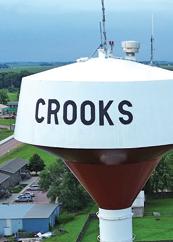
that to our advantage? We know many people have jobs in Sioux Falls. But when the workday is done, we want our citizens to ‘live lively’ right here in Hartford. Come eat here and have fun here. Our Downtown Hartford group puts on a farmers market four times a year. It’s just fantastic. I also think it’s fun to eat at the Hartford Steakhouse. I’m always amazed at the number of new people and the number of out-of-town people we see there.”
The last several years in Crooks have seen rapid expansion of housing options and growth in the industrial park. Oseby said, “It’s been enlightening to me to discover the number of home-based businesses out there. Their light industrial businesses have expanded to the point that they need something bigger than their garage to work out of.” The city’s new 36-acre industrial park has filled in quickly.
As Crooks grows in population, the city is intentionally striving to retain “small town living.” According to Oseby, “People don’t want to live in an area so big that they don’t know their neighbor across the street. Some small towns have grown sporadically with a little development here and another one a half mile away. Crooks is intentionally growing in a smaller circle to keep that small town feel.” He said both the Tri-Valley School District and the West Central School District are “top notch” and help draw new people to the area.
Another legacy project for Oseby is annexing farmland to Crooks so that as the territory going towards Sioux Falls fills in with homes and businesses during the decades to come, the benefits of property taxes and sales taxes will accrue to Crooks. Most importantly, it will ensure that the town retains its identity well into the future.
Jones has the same goal for Hartford. “Sioux Falls is the engine that really drives economic activity in the area. But I tell our citizens and tell our council, it’s huge for us to retain our identity. We’ve got some projects in the works that are really going to set up Hartford well for years to come. We’re not sitting on our heels.” //
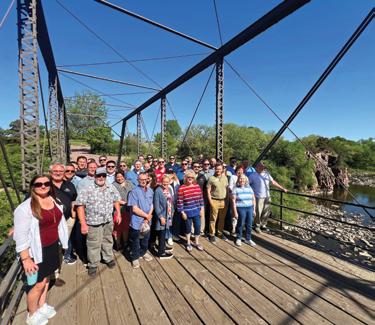
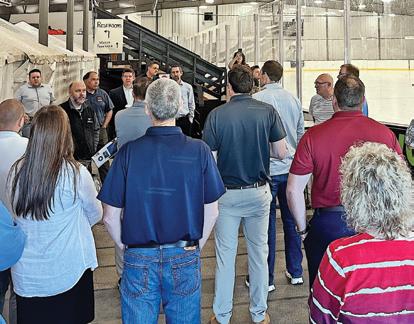
The Sioux Metro Growth Alliance hosts two tours each year to highlight economic progress and milestones in area communities. The SMGA Northern Tour this summer visited Brandon, Garretson, Crooks, Lyons, and Salem. Special thanks to tour sponsors: DGR, Tegra, and Sioux Valley Energy.




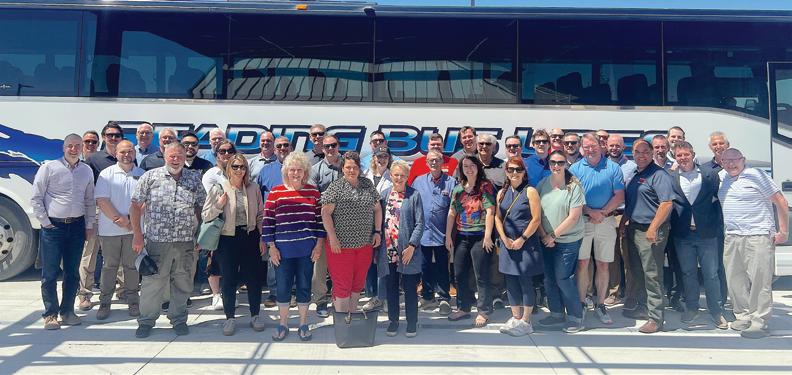
Founded 1888 Population 1,325
Home to McCook Central Public Schools.
Restaurants including The Brewery, The Den Drive Up, The End Zone Bar & Grill, Mom’s & Pop’s Pastry Bakery, Total Stop and Quick Stop (provides Senior Meals Program).
Community library.
McCook Country Club, scenic 9-hole course open to the public.
Thunder Alley bowling.
City park includes a swimming pool, plus facilities for volleyball, horseshoes and pickleball.
Complex adjacent to City Hall with facilities for baseball, softball, football, track, 4-H and FFA.
Multi-phase street, sanitary sewer, drainage and water main project designed by DGR.
Salem Area Foundation financially supports charitable and nonprofit organizations.
Easy access to I-90 and a short drive to Sioux Falls, Mitchell and Madison.
What a difference three years makes. The city of Salem was hit by two derecho storms in the space of less than two months in 2022. The first storm hit on May 12 and the second occurred on July 5. The ill winds affected a large swath of five states, but no place was hit harder than Salem and the surrounding area:
Wind gusts of 100 mph in the first storm destroyed the Avantara nursing home, forcing the evacuation and then permanent displacement of dozens of residents.
Many trees were severely damaged or uprooted. Homes and businesses were only beginning to recover from the first storm when the second one roared in, causing more damage and complicating the overall recovery.
The second derecho caused great damage to the local armory. The City Council ultimately decided against repairing the armory and approved its removal.
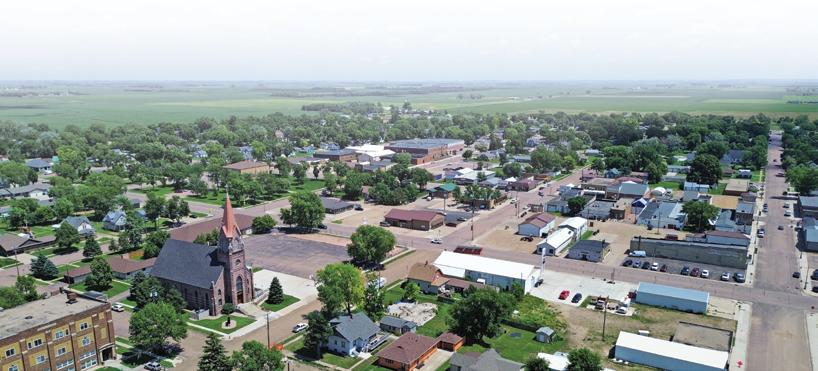

A community-wide spirit of resilience has propelled Salem forward despite the setbacks of 2022. The town of 1,325 people has snatched a silver lining from the black cloud that might have defeated a lesser municipality. Elected leaders, city staff, volunteer involvement and support from outside the city have all played a role in the ongoing recovery.
On May 28th, Salem opened a new $4.5 million City Hall and Community center. It was completed on time and on budget:
13,920 square-foot structure was designed by ISG with input from residents and city staff.
City offices and council chambers.
Event Hall: 5,200-square-foot hall measures 59’ x 88’; polished concrete floor; projectors and screens are on two walls; built-in audio system, plus two 98-inch displays.
Gathering Room: 1,100 square-foot room measures 41’ x 27’. Built-in video screen, two 65inch displays and audio system. Room connects to a modern kitchen designed for catering.
The Event Hall and Gathering Room are available to rent for family events, weddings, etc.
Indoor pickleball court.
Showers in the bathrooms.
Easy access use for ball tournaments.
Future plans call for a landscaped green space, gazebo and patio tables.
The Salem Economic Development Corporation has spearheaded a significant residential housing project on the former site of the nursing home. Called Colonial States Addition, it is Salem’s first new housing development in decades, demonstrating a belief in future growth. Individual businesses and citizens invested funds to help advance the mission of the Development Corporation. Utility work received notable support through the American Rescue Plan Act. Nineteen lots will be ready by fall with the utilities, curb and gutter in place.
Regular events include Downtown Market (June – October), Burger Battle, city-wide rummage sales, Main Street Trick or Treat, and Hometown Christmas events.
City’s summer recreation programs (boys baseball and girls softball and swimming lessons). City fields also host American Legion baseball and amateur men’s baseball and softball.
Pickleball court under construction.
Gotta Gaming video lottery and darts.


Marvin Wieman, 86, of Crooks, passed away on May 9th. Wieman was a past board member of the Minnehaha County Economic Development Association, one of the predecessor groups to the Sioux Metro Growth Alliance. Born in Monroe, South Dakota, he grew up in Oakland, California, and Paradise Valley, Arizona, but returned to South Dakota and graduated from Lyons High School in 1956. He and his wife, Elaine, were married in 1958 and lived in Brookings while he earned his degree in electrical engineering at SDSU. He worked at Control Data in Minneapolis before returning to South Dakota for a 38-year career with Raven Industries. Marv was a long-time community leader, serving as a volunteer fireman, church council member, park board member, volunteer baseball and basketball coach, Tri-Valley School board member for 39 years, and chairman of the Crooks Development Corporation.

Salem’s population of 1,325 belies the fact it has a broad-based business community spanning a range of both the basics and unique extras:
Agricultural equipment, products and services, conservation planting materials, plus veterinary services.
Apartment complexes.
Auto sales and service.
Construction, plumbing, electrical, lumber yard and tree service.
Family practice health care clinic plus health professionals in the fields of dental, physical and occupational therapy, and chiropractic.
Four churches.
Groceries: Maynards Grocery Store, Dollar General and Feterl’s Meat Market.
Group and in-home daycares.
Hair and beauty salons.
Insurance, financial planning and banking.
Motel and campground.
Pharmacy.
Physical therapy and fitness facilities.
Shopping includes a florist, gifts, second-hand store and new Annie’s Home & Vintage.
Three convenience stores.
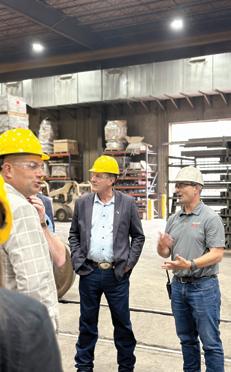

The Sioux Metro Growth Alliance helped welcome Gov. Larry Rhoden’s Open for Opportunity tours to Brandon, Baltic, Corson, Harrisburg, Tea and Lennox. The tours visited a number of businesses, including Buddies & Co. in Brandon, Midwest Rail Car Repair in Corson, DeGeest in Tea, and Sioux Steel in Lennox. “Open for Opportunity” conveys the state’s welcoming and growth-oriented environment, emphasizing possibilities for its residents and future generations. South Dakota is committed to providing opportunities in various sectors, including employment, education, and overall quality of life.

The Sioux Metro Growth Alliance represented the interests of its member communities at a discussion with a delegation from South Korea coordinated by South Dakota Trade. Topics included finding ways for more Korean business investment in the Sioux Metro and new partnerships for the importing and/or exporting of more agriculture related products.

ISG kept the rain off and the refreshments flowing — cheers to dry heads and full cups!
The SMGA Gold Shovel Golf Classic proved to be a wet affair this year at the Central Valley Golf Club in Hartford. No matter, attendees had fun and made connections with other business and civic leaders.








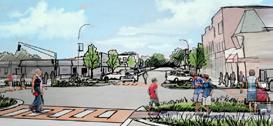

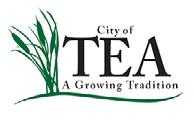
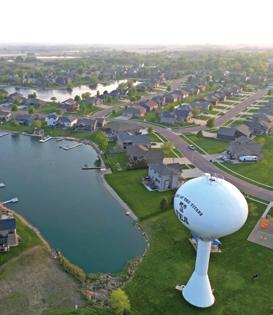


2003-042004-052005-062006-072007-082008-092009-102010-112011-122012-132013-142014-152015-162016-172017-182018-192019-202020-212021-222022-23
2,509 400-600 $58,479 1,200 SEAT
ESTIMATED ENROLLMENT 2024-2025
PROJECTED GROWTH OF ENROLLMENT IN THE NEXT 5 YEARS AVERAGE TEACHER SALARY
PERFORMING ARTS CENTER OPENING SUMMER 2025

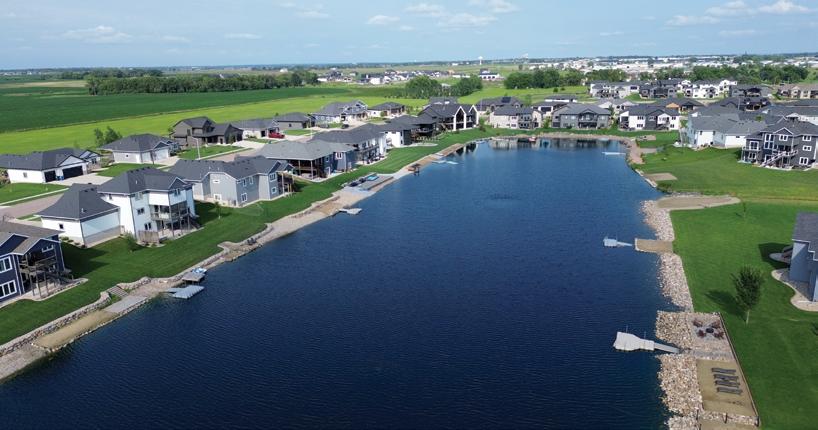
By Bob Fitch
Growing a company typically translates into serving customers in a broad geographic area. But there’s a homefield advantage when working with fellow contractors in a company’s hometown.
Schoenhard’s Custom Cabinetry is a 54-year-old Tea company that started in the garage of Gary Schoenhard in 1971. The company primarily serves building contractors and other customers in a 100-mile radius of Tea. A small portion of its customer base also extends to Chamberlain, Pierre and the Black Hills, and Schoenhard’s have even done custom work for a client in Alaska. When Gary started his company, it was just him and a teenage neighbor boy. That former neighbor is now a homebuilder in Colorado, but faithfully buys his cabinets from Schoenhard’s.
The company’s sales are strong enough that it can choose who to work with, said Rob Kolbeck, son-inlaw of the founder, and partner in the company with his brother-in-law Rob Schoenhard. “It’s always nice when we get to work with other companies based in Tea. You develop some close relationships. When you know someone’s expectations, things just seem to run smoother,” he said.
Among the four or five Tea-based homebuilders Kolbeck regularly does business with is Jeren Homes Inc. Jeren’s Craig Wynia said, “There are a lot of pluses when you’re working in your own backyard.” The rapid growth of Tea in the past 20 years has allowed Jeren Homes to leave a lasting imprint on its community. Local connections with companies such as Schoenhard’s, Thornton Flooring and Weller Landscaping breed a familiarity with expectations and the rhythm of each other’s work flow, Wynia said.
Started by JJ Myott in 2004, Jeren Homes builds houses in most communities of the greater Sioux Falls area. According to Wynia, “Looking back over the last 20 years, developers have probably covered a couple hundred acres of ground in Tea.” The population of the city has increased ten-fold since 1990. “For many people, the city of Tea started out as giving you a smaller school district to bring your kids to. But now the schools are busting at the seams, so the population growth has leveled off a little bit. Once the school catches up, then you’re going to see another wave of growth.”
The other factor that will contribute to Tea’s growth is the new overpass and exchange at 85th Street and Interstate 29. “That’s going to be amazing for the growth,” said Wynia. “The new 9 Mile Lake Development will have direct access on and off 85th Street on its north side. I think this development will fill up in probably five years or less, based just on getting 85th Street open. The commercial area right off the interstate is also going to explode, which will, in turn, also drive more people in.”
Kolbeck agreed, “It’s going to open a lot of people’s eyes. The commute is going to be so much quicker for a lot of people. It’s going to be an extra bloodline plugging into Tea.” Wynia added, “It’s going to be one of the main arteries that will feed Tea and Tea’s housing development for probably the next 20 years.”
A unique aspect of the Tea housing market is that it has become a city with about a half dozen ponds or small lakes. Wynia said, “Tea is very flat ground on top of a big aquifer. Back in the early ’70s, this was some of the best duck hunting in the state of South Dakota. So, in order to build a housing development, you’ve got to dig a pond to get the groundwater away from the homes. Nearly every new development has water in it somewhere. Having homes around these little lakes gives the developments so much character.” Kolbeck said it’s fun to see the small boats with trolling motors or kids fishing off the docks. //
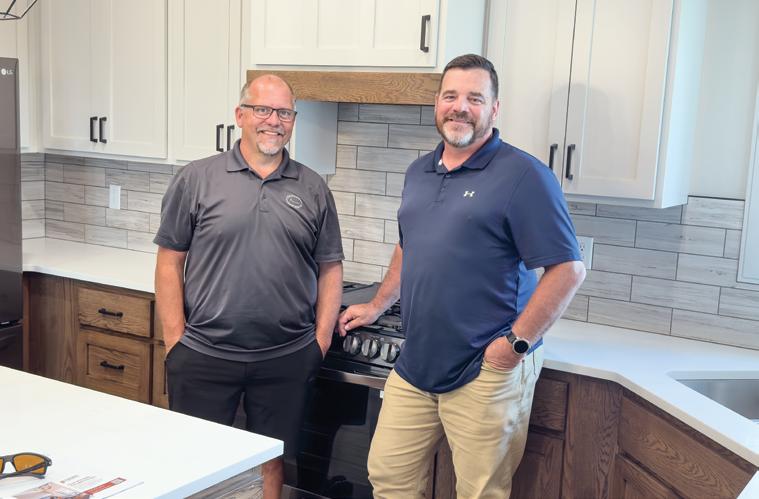

By Bob Fitch
Makers Exchange LLC opened in Tea almost a year ago. It is quickly becoming a goto gathering place not just for hardcore shoppers, but also for families. More than 100 independently-owned businesses are using the location to showcase their wares. Makers Exchange is located just off the Interstate 29 exit 73 and to the north of Casey’s General Store.
The shop owners do a phenomenal job of keeping their exhibit areas fresh, said Karen Krull, who manages the “Exchange” (shopping) side of the complex. “Some of the vendors come in two or three times a week to restock their booth and change things around. So there’s going to be something different each time you come.”
“For some of the vendors, this is a full-time enterprise. But for others it is a passion project or creative outlet. They have full-time jobs and don’t have the availability otherwise to have a storefront,” said Amy Balster, the Market manager. Vendors are responsible for creating, maintaining and restocking their space. There’s a monthly rental fee plus a small charge for each transaction to cover incidental expenses such as credit card fees.
The “Market” (food and drink) side of the complex updates its menu every week. “The changes keep people watching the menu


to see what will be new, whether it’s our soups, sandwiches or salads. In the morning, people enjoy our artisan waffles,” Balster said.
The Market also sells fresh and frozen locally grown food, such as cheese, beef, pork, sourdough bread and gluten-free mixes. Customers particularly enjoy products from the Hutterite colonies. “All of their cheese and other products are absolutely delicious and it sells so quickly,” Krull said. The Market also has ready-made salads or fresh take-and-bake meals that are convenient for lunch or the evening meal.
The Exchange is a destination shopping experience with an eclectic mix of products that are appealing to both women and men. There are florals, gifts, children’s clothing, cutting boards, laser-made signs and man-cave décor. For husbands who may peruse the Exchange sales floor more quickly than their wives, the Market side of the venue is a good place to hang out with big screen TV and beverages from coffee and espresso to beer and wine.
Balster said, “We also do a featured business of the week where we offer the employees a free drink as a way to introduce the facility. The crew from Sherwin Williams was in here and, you know, they are not our usual target market. But a bunch of their guys are now coming in regularly. They had a preconceived perception this was a ‘girly spot.’ But now some are eating lunch here three times a week plus are buying eggs and meat. It’s also been fun for us to get to know more about local businesses.” //





In-depth

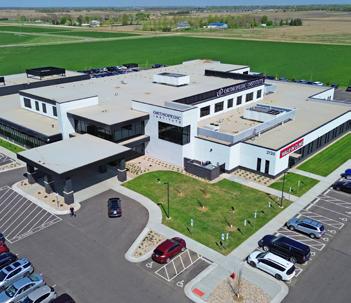
The Tea area welcomed a major new employer in February 2025 when Orthopedic Institute opened its new state-of-the-art medical building at 2120 Live Longer Street. When the 85th Street bridge is completed, the Institute will have direct access to Interstate 29 and Sioux Falls proper.
The independent physician group has 330 employees, of which approximately 280 will be based at the Tea location. The 80,000-square-foot facility offers more services under one roof, expands clinical space and continues the group’s cutting-edge orthopedic care. Founded in 1972, Orthopedic Institute was located on the Avera McKennan campus until this move. It has eight satellite clinics located in eastern South Dakota, plus four in Minnesota and three in Iowa.
The Orthopedic Institute team utilizes technology and treatments to help patients address and recover from musculoskeletal conditions such as joint replacements, lacerated tendons, complex spine deformities, broken ankles, sports injuries, chronic pain, newborn conditions and elderly hip fractures. For more information, see www.orthopedicinstitutesf.com //

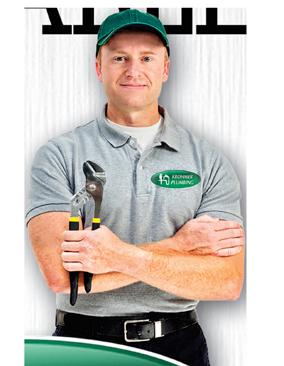

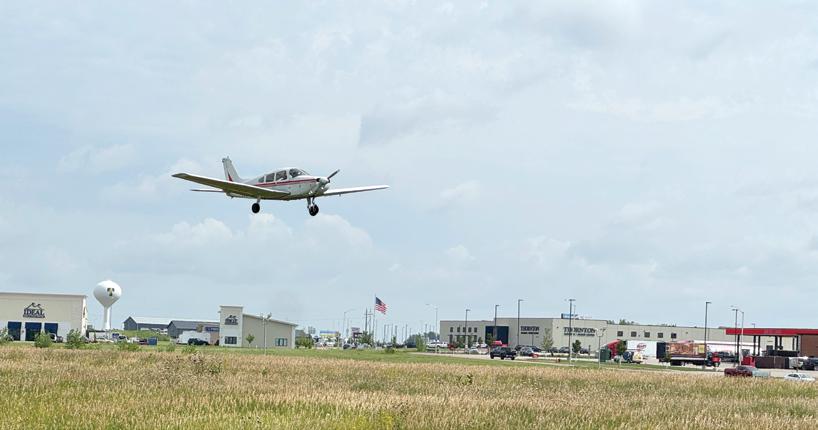
By Bob Fitch
Fasten your seat belts, there’s a lot taking off on the east side of Tea.
The city is home to the Marv Skie–Lincoln County Airport, located within the industrial park adjacent to Interstate 29. It was named for the late Marvin A. Skie, a Lincoln County Commissioner from Lennox, who was instrumental in the acquisition and establishment of the public use airport.
Started as a private airfield in 1969, its names have included Sky Haven and Great Plains, but it has always commonly been referred to as the “Tea Airport.” It was purchased by Lincoln County in 1988 with grants from the federal and state government. The intention was to develop the area and expand the county’s tax base, Marv Skie told the Argus Leader in 1989. The county’s planning and zoning director at the time said it will be “a very important magnet for commercial businesses” in the area.
The Lincoln County Airport is one of the busiest general aviation airports in the state. More than 5,000 flights a year go through Tea. There are close to 70 hangars and more than 100 aircraft based there. As air traffic increases and hanger space becomes more precious at the Sioux Falls Regional Airport, the airport in Tea expects to continue to grow, said David Myers, who has been the manager in Tea for about two-and-a-half years. The federal government paid the lion’s share of $2.5 million used recently to complete a new ramp to replace one that had become a hazard to pilots because of loose rocks and asphalt.
New hanger space is on the drawing board for 20 acres the county purchased several years ago. If grant money becomes available to pay for the taxiways, Myers expects strong demand for the subsequent hangar space. Revenue is generated for the county in the form of hangar lease agreements and property taxes. The property tax revenue goes into the county’s general
fund; a portion of the lease fees comes back to the airport for maintenance and operations. The county also collects sales tax on fuel sold at the airport. The airport is typically revenue-neutral for Lincoln County.
Several businesses based in the Sioux Falls area own planes that call the Lincoln County Airport home. Lives have been saved by the airport as well. Both Avera and Sanford will sometimes fly their fixed wing aircraft into the Lincoln County Airport when transporting patients or doctors for heart procedures. By flying into Tea instead of Sioux Falls Regional, the 11-minute time savings from airport to hospital can mean the difference between life and death.
Sioux Falls Regional has applied to move up to being a Class C airport. That would expand the Sioux Falls airspace footprint, requiring aircraft within the footprint flying at higher than 800 feet to check in with Sioux Falls. While that could impact many flights in and out of Tea, it probably would become a long-term asset. The change would allow the Tea facility to pursue IFR (Instrument Flight Rules) status – a step up from its current VFR (Visual Flight Rules) status. That offers the potential for larger aircraft to choose the Lincoln County Airport. It’s even possible one of the Sioux Falls hospitals might choose to build a hanger in Tea.
Legacy Aviation LLC is the busiest business at the Lincoln County Airport. It is certified by the FAA as a flight school, maintenance facility and an on-demand air carrier. Legacy Aviation maintains a complete powerplant and airframe maintenance facility, specializing in working on single engine and twin-engine piston aircraft. Founded in 2013, Legacy Aviation’s private charter service serves businesses and families. Legacy’s flight school includes flight instruction, aircraft maintenance and servicing and FBO service.
Premier Aviation is also based at the airport and provides professional aircraft repair and maintenance.
The Experimental Aircraft Association (EAA) has a chapter based in Tea. EAA focuses on camaraderie of participating in the flying, building, and restoring of recreational aircraft among a passionate community of aviation enthusiasts. EAA frequently shares its love of flying, including a pancake breakfast every third Saturday when the public is invited to visit the airport to view aircraft.
Myers said there is a common focus on safety as the highest priority at the Lincoln County Airport. “Everybody here flies very respectfully. We don’t have

people doing aerobatics over the runway or those types of things. Everybody abides by the rules.”
Meyers himself is a member of The Vanguards, a formation performance team that takes part in many air shows and other events across the country. Their home is at the Lincoln County Airport. “I’m a pilot and I love aviation. After college, I started flying and did that for six or seven years. Later, I wanted to get back in, so I started hanging out here – I was sweeping the floors and just hanging out like a groupie. Eventually, I learned to fly one of the Vans RV-3 single seat aircraft with 160 horse power engine and became part of the team.” The team is operated as a business, but the seven owners are lucky to break even each year with the cost of fuel and maintenance.
Myers is now the lead pilot of The Vanguards. “Our team is very sociable. We want to promote aviation and we’re crowd friendly. We don’t bury ourselves in the hanger … we’re glad to talk to people and answer their questions.” //


$78,550
$4,874,327
$46,477,143
$3,402,270
$1,034,220
$105,883
$3,663,832
$6,486,774
$2,820,848
$25,665,246
$3,589,830
$310,810
$3,589,830 $512,572


$23,750
$4,239,489
$10,840,073
$1,459,970
$423,714
$10,000
$6,980
$1,123,000
$2,051,500
$9,808,955
$1,381,362
$5,363,774 $769,348 $15,856,291 $2,208,648 $310,810 $5,074,836.78 $503,908.72 $7,928,508.00 $386,066.00 $1,000,620.80 $81,918,562
Beresford Alcester
Brandon

Colton
Dell Rapids
Humboldt
Lennox
Salem
Valley Springs
Worthing
SIDE-BY-SIDE IN THE
SALES TAX RECEIPTS, YTD ON JUNE 30 | DATA SOURCE: SD DEPT OF REVENUE
$133,616
$735,366
$2,893,027
$119,059
$899,757
$146,654
$114,529
$199,212
$1,084,965
$274,320
$1,802,847
$878,781
$151,334
$567,546
$326,173
$2,282,115
$109,455
$128,759
$12,847,515
$99,028,945
$141,177
$793,900
$2,860,461
$119,276
$790,615
$181,571
$115,329
$171,610
$895,764
$284,519
$1,695,876
$923,722
$161,771
$539,943
$333,956
$2,123,952
$112,291
$117,199
$12,362,932
$98,491,105







